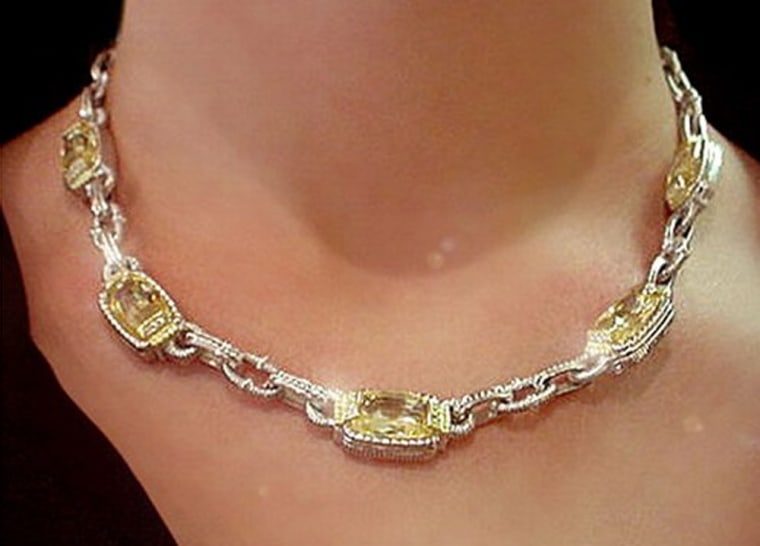Luxury retailers may be on the ropes, their once-avid shoppers heading for the exits. But the economic malaise gripping the country could have a silver lining for a small but growing section of the luxury market, one that rents to women what they can’t afford to buy — or, possibly, keep.
Over the past several years, a handful of businesses that rent high-end accessories has sprung up. They are the descendants of the shops that rented designer formal wear for special occasions, cousins of rental and fractional-ownership businesses offering everything from destination vacations to yachts, jets and collectible cars. Industry watchers believe such luxury rental businesses may benefit from the pain retailers are beginning to feel as gyrations in the stock and housing market cause even well-heeled customers to pull back on spending.
The economic downturn “will focus the minds of people on what the alternatives are to full ownership and help accelerate the growth of the industry,” says Milton Pedraza, chief executive of the Luxury Institute, a New York-based research firm. “I think long term, people will realize that instead of owning an asset you can just buy the experience.”
Michele Krause, founder of Bling Yourself, says her customer base has grown between 20 and 40 percent a month since she launched her jewelry-rental business last July, and that the economic slowdown has had “no impact” on the number of new customers or rentals. Another such enterprise, From Bags to Riches, which rents and sells handbags, is even expanding, preparing to launch spinoffs in Canada, South Africa, and the United Kingdom within the next three months.
“We think our business will increase fairly dramatically this year because it is a value-driven proposition,” says Sam Mangiere, co-founder of From Bags to Riches. Top-line sales growth for his three-year-old company was up 57 percent so far this year, compared with the same period in 2007. Mangiere says about 50 percent of the growth has come from rentals.
These kinds of businesses cater to two basic types of consumers, says Greg Shove, C.E.O. of Halogen Guides, a luxury-trend tracker: aspirational buyers trading up to a product or lifestyle they cannot afford or consumers who can afford to buy but want more choices. Even in a protracted recession, Shove says, rental companies benefit because they “make luxury more affordable.”
Pedraza believes luxury-goods makers will, in fact, move into the sector themselves, just as established players such as Wyndham Worldwide and Ritz-Carlton have entered the destination-club market. “You get cash flow up front, what should be recurring revenue, and you can arbitrage the inventory by paying wholesale [and renting retail],” he explains.
Manufacturers, however, aren’t clamoring to send their product out to rental houses. Lisa Roman, marketing director for Breitling, says her company does not rent its high-end watches — many of which sell for $20,000 to $30,000 — and has no plans to do so. “Most of our customers purchase their watches to keep and collect,” she explains.
But investors have warmed to the rental idea. Last year, one of the largest entrants in the space, Bag Borrow or Steal, received $15 million in venture funding, bringing its total take from investors to $27 million. The investment enabled the company, which has reported steady revenue growth in each of its four years, to expand into high-end jewelry.
Krause — whose firm rents watches made by companies such as Rolex and jewelry from designers like Judith Ripka — says weekly rental rates generally run 10 to 15 percent of an item’s retail price and that each piece has a rentable lifespan of about two to three years. “That’s one thing we like about focusing on jewelry and watches,” she says. “It is not dictated by the fashion trends, so we don’t have to turn over the inventory every four months, so we get more return on our investment.”
But such beneficial economic effects may be elusive for customers. Calling the borrowed-luxury business the “canned fruit of the accessories world,” David Laibson, a professor of economics at Harvard University, says such rental- or fractional-ownership systems can also shroud poverty. Laibson points out that “the customers of these rental firms publicly appear much wealthier than they actually are.”
And they may be overpaying. A Rolex watch renting for $900 a month on Bling Yourself could be bought new within about five months at the same price. If sold used, the watch would probably fetch about 85 percent of the original price, according to published figures. Bag Borrow or Steal carries several popular bags that can be purchased for the same amount customers would pay to rent them for five or six months.
Of course, customers don’t often shop with such calculations in mind. Watson explains that some clients “become almost addicted” to the rental service, and that a “substantial number” end up buying merchandise they had previously rented. “We had some customers buy items yesterday that they had for almost a year,” says Watson. “They just found out they loved the items and needed to keep them forever.” That was one hefty rental fee indeed.
